
Growing tomatoes is a very exciting process. Especially if you do it from scratch, starting with the selection of seeds and ending with the collection of ripe fruits. This publication will be useful primarily for gardeners-beginners who are just taking the first steps to their own harvest. However, experienced summer residents will also be able to find a lot of useful information and valuable tips.
Biological feature
Tomato has a highly developed root system of rod type. The roots are branched, grow and form quickly. Go into the ground to a greater depth (when nonseedlings culture up to 1 m or more), spreading in the diameter of 1.5-2.5 m. in the presence of moisture and nutrition for more roots can form on any part of the stem, so the tomato can be propagated not only by seed but also by cuttings and side shoots (laterals). Put into the water, they form roots in a few days.
The stem of the tomato is erect or decumbent, branching, height from 30 cm to 2 m or more. Leaves are unpaired, dissected into large lobes, sometimes of potato type. The flowers are small, nondescript, yellow in various shades, collected in a brush. Tomato is an optional self-pollinator: there are male and female organs in one flower.
Fruits-juicy berries of different shapes (from flat-rounded to cylindrical; can be small (weight up to 50 g), medium (51-100 g) and large (over 100 g, sometimes up to 800 g or more). The color of the fruit from pale pink to bright red and crimson, from white, light green, light yellow to Golden yellow.
According to the structure of the Bush, the thickness of the stem and the nature of the leaves, there are 3 varieties of tomatoes: non-stamp, stamp, potato.
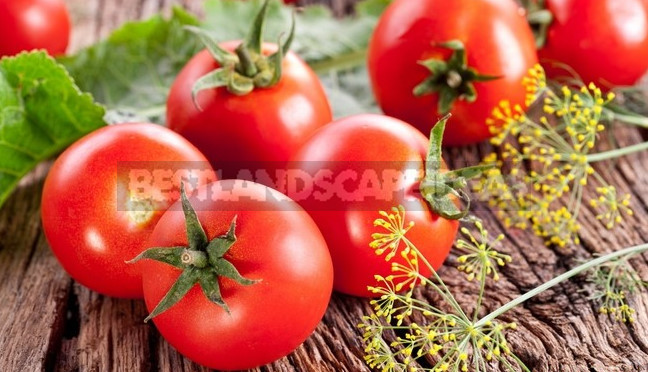
Tomato today-one of the most popular crops due to its valuable nutritional and dietary qualities, a wide variety of varieties, high responsiveness to the methods of cultivation. It is cultivated in the open ground, under film shelters, in greenhouses, greenhouses, balconies, loggias and even in the rooms on the windowsills.
Tomato fruits are eaten fresh, boiled, fried, canned, tomato paste, tomato puree, tomato juice, ketchup and other sauces, Lecho. Cold tomato soups are popular in Spain.
The most rich in lycopene and other nutrients dried tomatoes, which are added to soups. For 4-10 days of drying in the sun cherry tomatoes lose 88% of their weight, and large tomatoes — up to 93 %. To get a kilogram of dried tomatoes, it takes from 8 to 14 kg of fresh fruit.
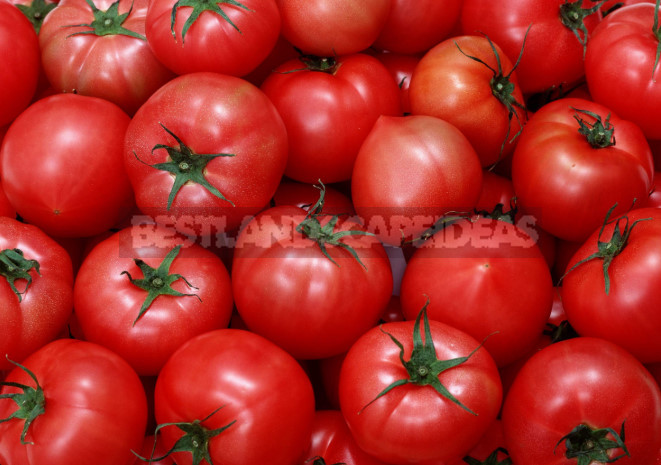
Determination of the sowing date
Tomato seedlings, depending on the place of planting, growing conditions, growth intensity, by the time of planting in a permanent place can be of two ages: 45-55 and 55-65 days. The state of completely opened and accepted horizontal position of cotyledons is taken as the beginning of reference.
It takes 45-55 days for determinant hybrids and varieties (that is, those plants that themselves limit their growth and reach a maximum of 1.6 m). Most of them are more rational to grow outdoors or under temporary shelters. Tall indeterminate hybrids that you plan to grow in greenhouses and greenhouses (that is, having the opportunity to be early in a comfortable environment), it is better to be older — the age of 55-65 days.

Growing seedlings for the first time, young gardeners often incorrectly calculate the timing of planting plants in the ground (protected and open) for a permanent place. Under our weather conditions it is difficult to understand and accurately determine them. But it should be remembered that overgrown seedlings bring a lot of trouble and problems when planting.
Methods of sowing
Sowing tomatoes is carried out in two ways. You can sow dry seeds directly into prepared container filled with soil. Unfortunately, with poor seed quality (poor germination) will be used in vain capacity, soil, place, time and effort. Our seeds have 100% germination, and their sowing in a dry state only for 2-3 days will delay emergence.
The second method eliminates the failure of the first and involves the preliminary preparation of seed. In this case, we quickly learn about the quality of seeds and their viability, as well as reduce the time of growing seedlings for a few days.
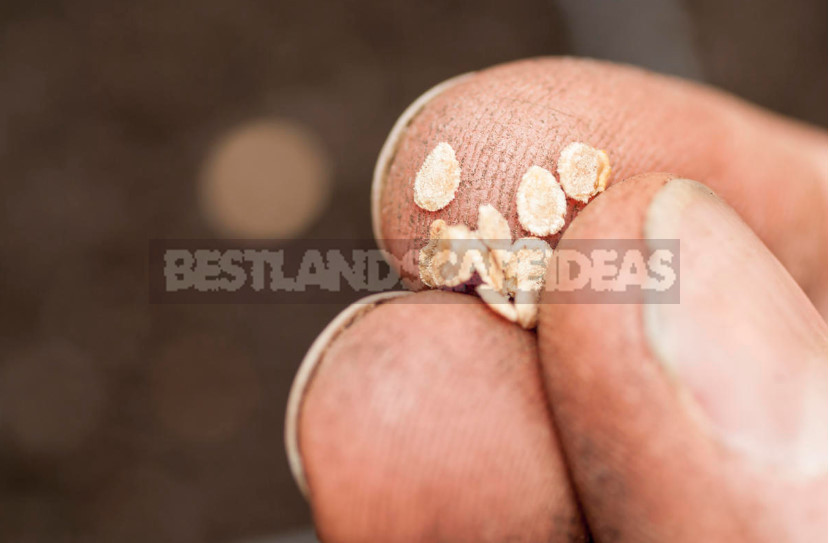
Preparation is the awakening of the embryo. This primarily requires moisture, oxygen and heat. Our seeds treated and do not require disinfection.
Nature takes care of itself — for the continuation of life in the seed laid the necessary energy. This is a good reason not to stimulate the revival of seeds with chemical and natural activators. “In a healthy body, a healthy mind” – this proverb is the best characterizes our seeds.
Preparation of seed
So, having determined the dates of planting, we start growing seedlings. Soak the seeds in rain or melt water. This water contains a huge amount of oxygen and a minimum of unnecessary salts. It can resurrect even very old seeds that have lain in your Desk for 10-15 years.
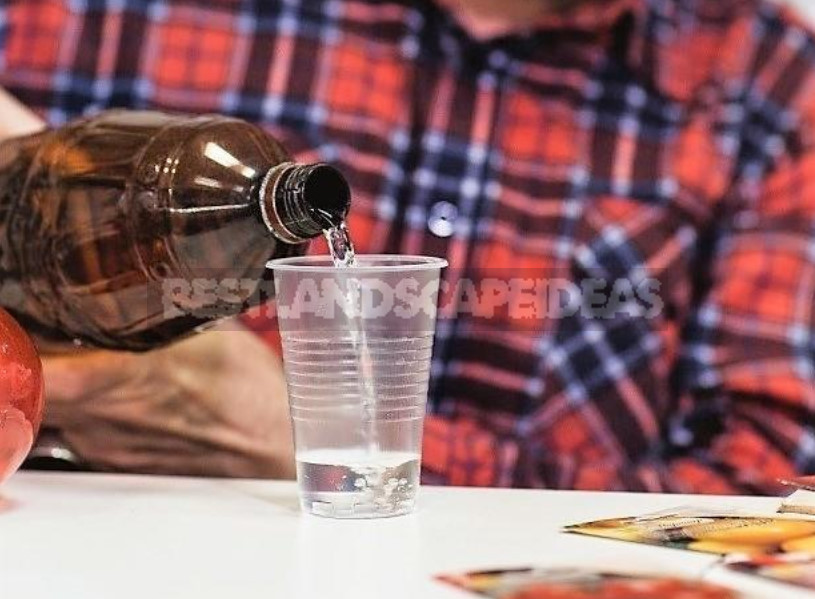
In a Cup or glass, pour the seeds and pour 2-3 cm of life-giving moisture. Soak the seeds at a temperature of about + 25°C for 12-18 hours.
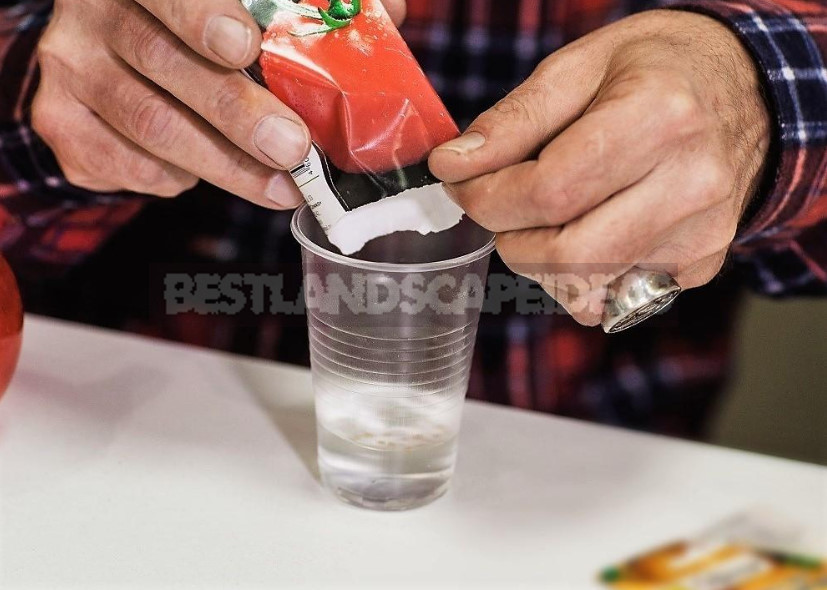
The next stage is the awakening and birth of a small spine. To do this, we select a container (a Cup or a small jar), at the bottom of which we put cotton pads or any fabric that holds water.

Top spread the soaked seeds, close the container lid or place it in a plastic bag and set on the top shelf in the kitchen.
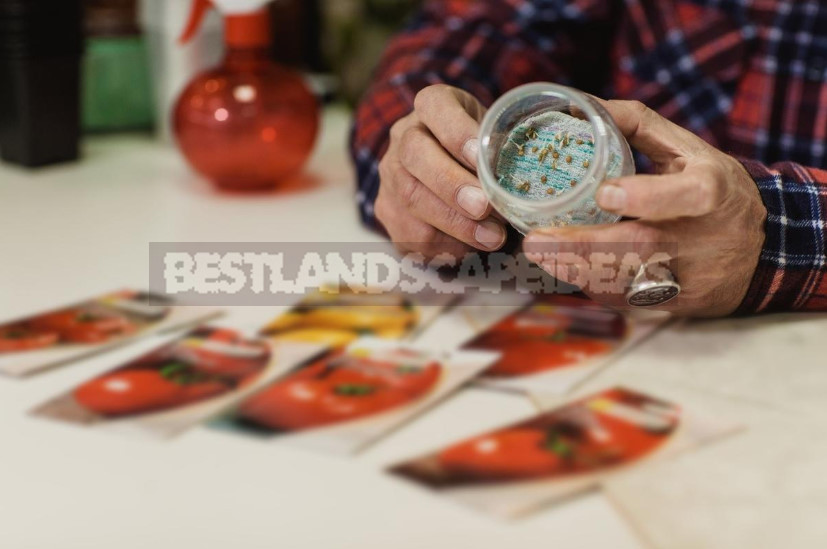
After waiting for the seeds to be pecked, it is impossible to allow them to overgrow. Stop growth will help the vegetable compartment of the refrigerator. Thus, we can postpone the landing for 3-5 days. Seeds with roots up to 1 cm long can be sown, laying in holes or grooves as necessary. It is only important that these seeds were at a depth of 1.5 cm
It often happens that the roots grow very quickly, penetrate deeply into the wet material, making their extraction becomes very problematic. Sowing sprouted seeds with the affected root system is complicated and requires a lot of time and effort. Of course, the roots will recover, but the development of the plant will slow down.
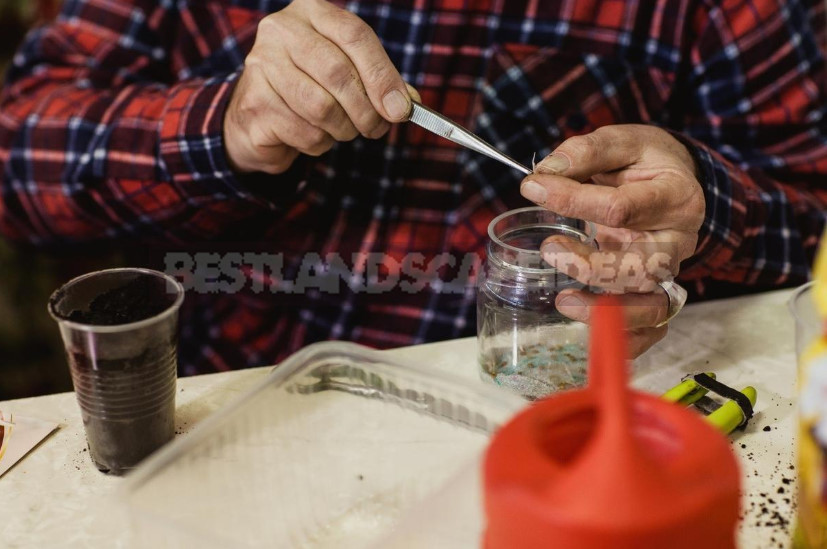
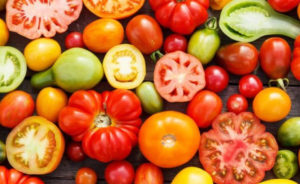



Leave a Reply